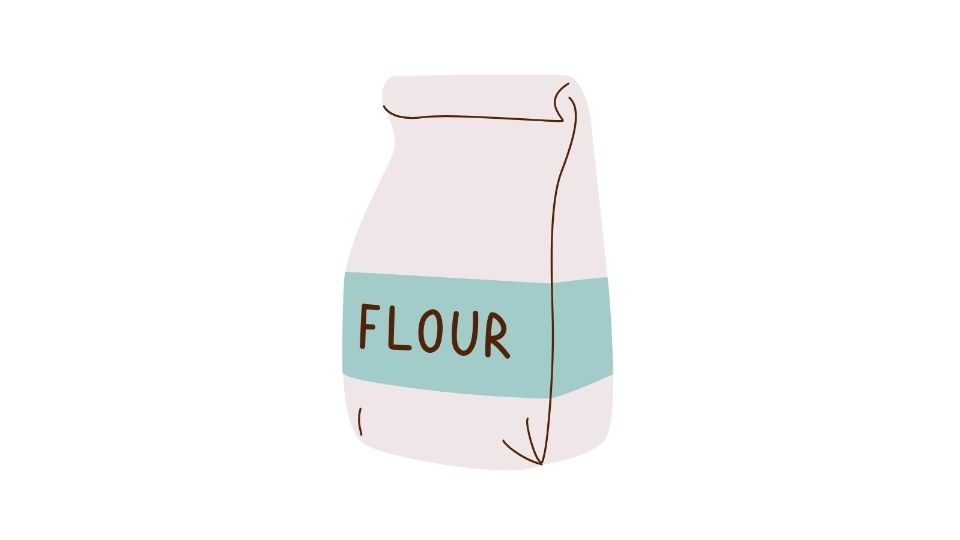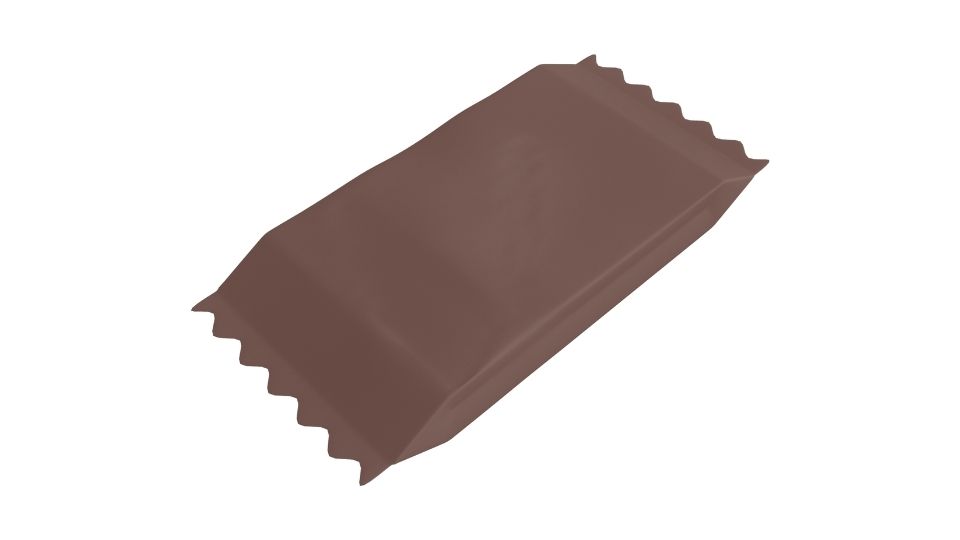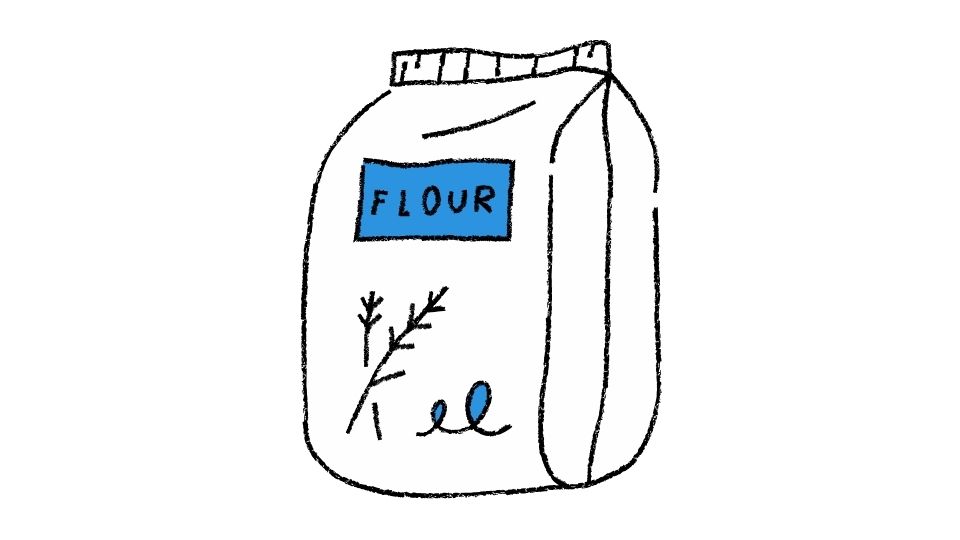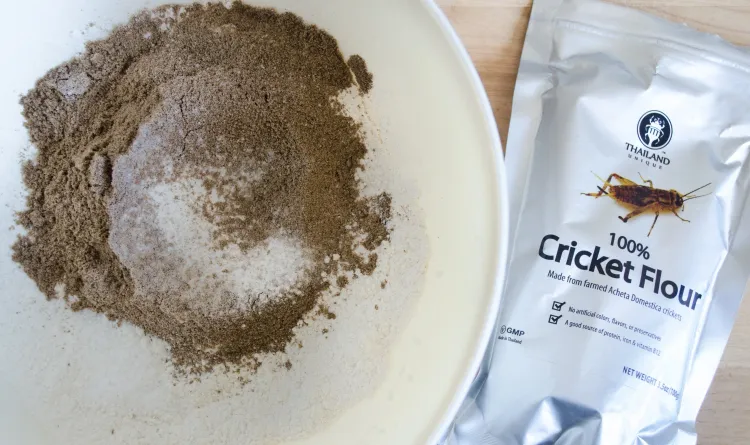Cricket Flour Nutrition Facts: Is It Actually Healthy?

The cricket flour revolution is here.
You’ve probably heard whispers about people eating bugs as the “future of food” – and while I’m not suggesting you start munching on live crickets anytime soon (though, you do you), cricket flour is a whole different ballgame.
It’s a superfood powerhouse that’s making waves for good reason. And no, it doesn’t taste like you’re licking the bottom of a cricket cage.
So what exactly is cricket flour? It’s exactly what it sounds like – whole crickets dried and ground into a fine powder that packs a nutritional punch most other foods can only dream about.
If you’re skeptical, I get it. I was too. But the nutrition facts don’t lie, and they’re pretty darn impressive.
Let’s dig into why this might be worth adding to your pantry – with a healthy dose of my opinion sprinkled on top.
Cricket Flour: Nutrition Breakdown
Protein Content: Move Over, Chicken Breast

If you’re into fitness or just trying to get enough protein in your diet, cricket flour deserves your attention.
This stuff contains a whopping 45-74% protein by weight – that’s comparable to or even higher than chicken breast, and blows most plant proteins out of the water.
But it’s not just about the amount. Cricket protein is complete protein – meaning it has all nine essential amino acids your body needs but can’t make on its own. Those include the branched-chain amino acids (BCAAs) that are crucial for muscle development and recovery.
The digestibility is solid too – between 80-88%, which puts it on par with many plant proteins (though slightly below some animal sources).
Vitamin Content: B12 Bonanza

Here’s where cricket flour really shines in a surprising way – it’s loaded with vitamin B12.
For context, cricket flour contains about 17-24 micrograms of B12 per 100 grams – which is roughly 10 TIMES the B12 found in salmon. That’s not a typo.
If you’re vegetarian or vegan, this should make your ears perk up, since B12 is notoriously difficult to get without animal products. (And yes, I realize the irony of calling crickets a vegetarian option, but they’re much closer to plants on the ethical spectrum than cows or pigs).
B12 is essential for:
- Energy production
- Brain health
- Nervous system function
- DNA synthesis
It also contains other B vitamins like riboflavin, thiamine, and folate that support your body’s energy metabolism.
Mineral Content: Iron Man Approved
The mineral profile in cricket flour is where things get really interesting.
It contains impressive amounts of:
- Iron: 6-11mg per 100g (more than twice what’s in spinach, with better bioavailability than beef)
- Calcium: Often exceeding amounts in both plant and animal sources
- Potassium: Essential for muscle function and fluid balance
- Zinc: Critical for immune function and wound healing
- Magnesium: Needed for hundreds of biochemical reactions
This study published in the Journal of Agricultural and Food Chemistry confirms that cricket flour’s mineral profile makes it a nutritional powerhouse compared to traditional protein sources.
Fat & Fiber: The Unsung Heroes
Beyond protein, cricket flour contains beneficial fats and a unique fiber that most other protein sources lack:
- Healthy fats: Including a balanced ratio of omega-3 and omega-6 fatty acids that support brain and heart health
- Low saturated fat: Compared to many animal proteins
- Chitin fiber: A prebiotic that feeds your good gut bacteria and may help reduce inflammation
This comprehensive analysis in the journal Nutrients details how cricket flour’s unique prebiotic properties support digestive health in ways other protein sources simply can’t match.
Health Benefits Beyond Nutrition
Muscle Building & Recovery
The complete amino acid profile in cricket flour makes it ideal for muscle building and recovery. The high protein content combined with all essential amino acids means your body has the building blocks it needs to repair and grow muscle tissue.
According to research in the International Journal of Sport Nutrition and Exercise Metabolism, insect proteins like cricket flour show promise for post-workout recovery comparable to whey protein.
Energy Boost & Fatigue Fighter
That massive B12 content I mentioned earlier? It’s a game-changer for energy levels.
B12 and iron work together to improve hemoglobin production and oxygen transport in your blood. If you’re feeling fatigued regularly, these nutrients are crucial – and cricket flour delivers them in spades.
Gut Health Superhero
The chitin fiber in cricket flour is something special. It acts as a prebiotic, feeding the beneficial bacteria in your gut.
Why does this matter? Your gut microbiome affects everything from your immune system to your mood to your weight management. Cricket flour’s unique fiber profile may help:
- Reduce inflammation
- Improve digestion
- Support immune function
Environmental Win
I’d be remiss not to mention the sustainability angle. Cricket protein requires:
- 1/12th the feed compared to beef
- 1/2000th the water compared to beef
- Dramatically less land than any livestock
- Significantly fewer greenhouse gas emissions
As detailed in this in-depth sustainability analysis from Food Security, cricket farming’s reduced environmental footprint makes it one of the most sustainable protein sources available.
Practical Uses: How To Actually Eat This Stuff
Alright, so cricket flour is nutritious. But let’s be real – if it tastes like bugs, you’re not going to eat it.
The good news? It has a mild, nutty flavor that works well in many recipes. Think of it as similar to whole wheat flour, but with a slight earthiness.
Here’s how to use it:
- Baking: Replace up to 1/3 of regular flour in breads, muffins, cookies
- Smoothies: Add 1-2 tablespoons to your morning protein shake
- Soups and sauces: Stir in to thicken while boosting nutrition
- Energy balls: Mix with dates, nuts, and cocoa for protein-packed snacks
It’s also gluten-free, which is a bonus for those with sensitivities.
The Fine Print: Considerations Before You Jump In

Before you go all-in on cricket flour, there are a few things to consider:
Shellfish allergies: If you’re allergic to shellfish, you might react to cricket flour too. The exoskeletons share similar compounds.
Start small: Begin with a small amount to see how your body reacts, especially if you’re new to insect-based foods.
Source matters: Not all cricket flour is created equal. Quality depends on what the crickets ate and how they were processed.
In Summary
Cricket flour is legitimately one of the most nutritionally dense foods on the planet:
- Super high in complete protein
- Packed with B12 and other B vitamins
- Rich in essential minerals like iron and calcium
- Contains beneficial fats and unique prebiotic fiber
- Environmentally sustainable
While I’m not suggesting you throw out all your other protein sources, cricket flour definitely deserves consideration as part of a varied diet – especially if you’re looking for nutrient-dense options that are easy on the planet.
Is it worth trying? In my opinion, absolutely. The nutrition profile alone makes it worth getting over the “ick factor” – and honestly, once it’s in powder form, you won’t even remember it came from crickets.
Would I replace all my protein with cricket flour? No. But am I adding a couple tablespoons to my smoothies and baking with it occasionally? You bet.

